Choosing the Right HVAC System for Your Arizona Home
(Without Melting in the Process)
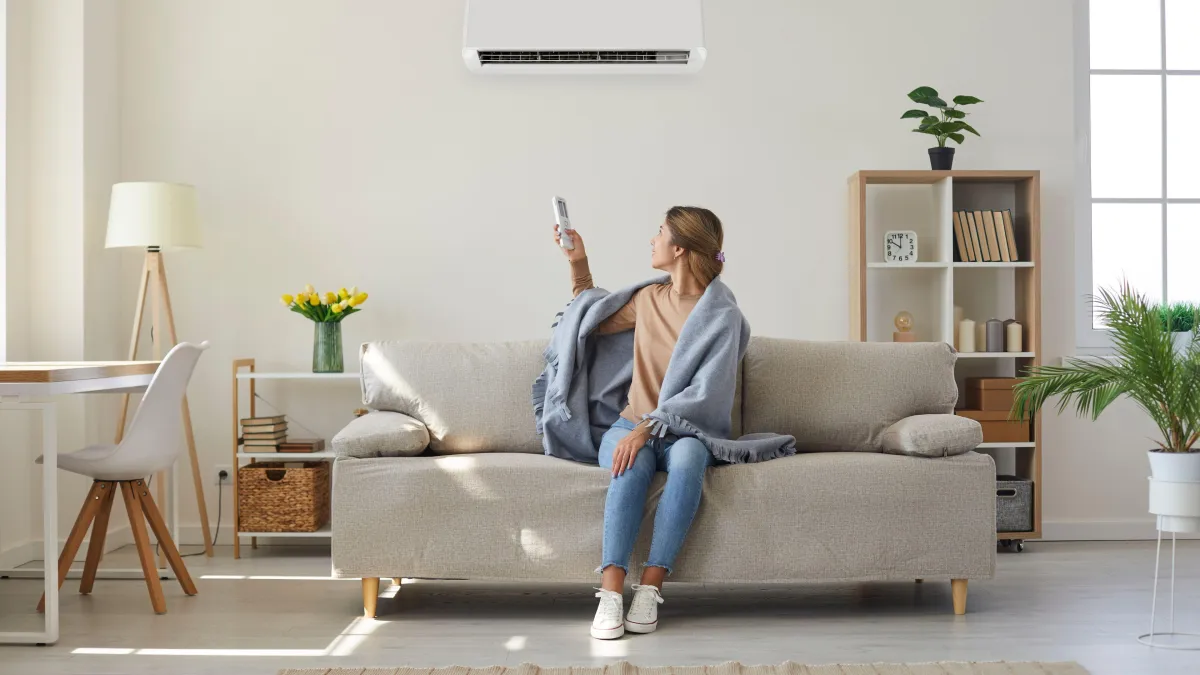
If you’re new to Arizona, let me just say this: welcome to the land of endless sunshine, scorpions, and summer temperatures that make you question all your life choices. Seriously, air conditioning isn’t just a luxury out here – it’s a survival tool. Whether you’re buying a new home, investing in a rental, or just trying to keep your cool, here’s a guide to choosing the right HVAC system for your desert oasis.
When you’re shopping for an HVAC system, you’ll notice a bunch of acronyms and numbers. Here’s a quick primer on what they all mean:
1. SEER (Seasonal Energy Efficiency Ratio)
This measures how efficiently a unit cools your home over a typical cooling season. The higher the SEER rating, the more efficient the unit. In Arizona, a SEER rating of 16 or higher is a good choice if you don’t want to cringe every time your electric bill shows up.
2. EER (Energy Efficiency Ratio
Similar to SEER, but measured at a single, specific outdoor temperature. It’s a better measure for extreme heat performance, which is crucial in Arizona.
3. HSPF (Heating Seasonal Performance Factor)
This is like the SEER rating, but for heating. It only applies to heat pumps. Higher HSPF means more efficient heating.
4. BTUs (British Thermal Units)
This measures the amount of heat the system can remove from your home per hour. You’ll typically want about 20 BTUs per square foot in Arizona’s intense heat – trust me, you don’t want to skimp here.
What Size HVAC System Do You Need?
Bigger isn’t always better. An oversized system will cool your home too quickly, cycling on and off frequently, which wastes energy and shortens the lifespan of your unit. An undersized system, on the other hand, will struggle to keep you cool, especially when the summer temps hit triple digits.
Quick Sizing Guide:
1.5 to 2.5 tons for homes up to 1,200 square feet
2.5 to 3.5 tons for homes up to 2,000 square feet
3.5 to 5 tons for homes up to 3,000 square feet
For more precise sizing, have an HVAC professional perform a Manual J load calculation, which takes into account your home’s insulation, windows, ceiling height, and local climate.
How Often to Service Your HVAC System
Regular maintenance is key to keeping your system running efficiently and extending its lifespan.
Replace or clean filters every 1-3 months.
Schedule professional tune-ups twice a year – once before the cooling season and once before the heating season.
Clean the condenser coils, clear debris around your outdoor unit, and check refrigerant levels
Types of HVAC Systems – Which One Is Right for Your Home?
Not all HVAC systems are created equal, and if you’re making the jump from the Midwest to the desert, you might be in for a surprise. Here’s a rundown of the most common types of systems and where they work best:
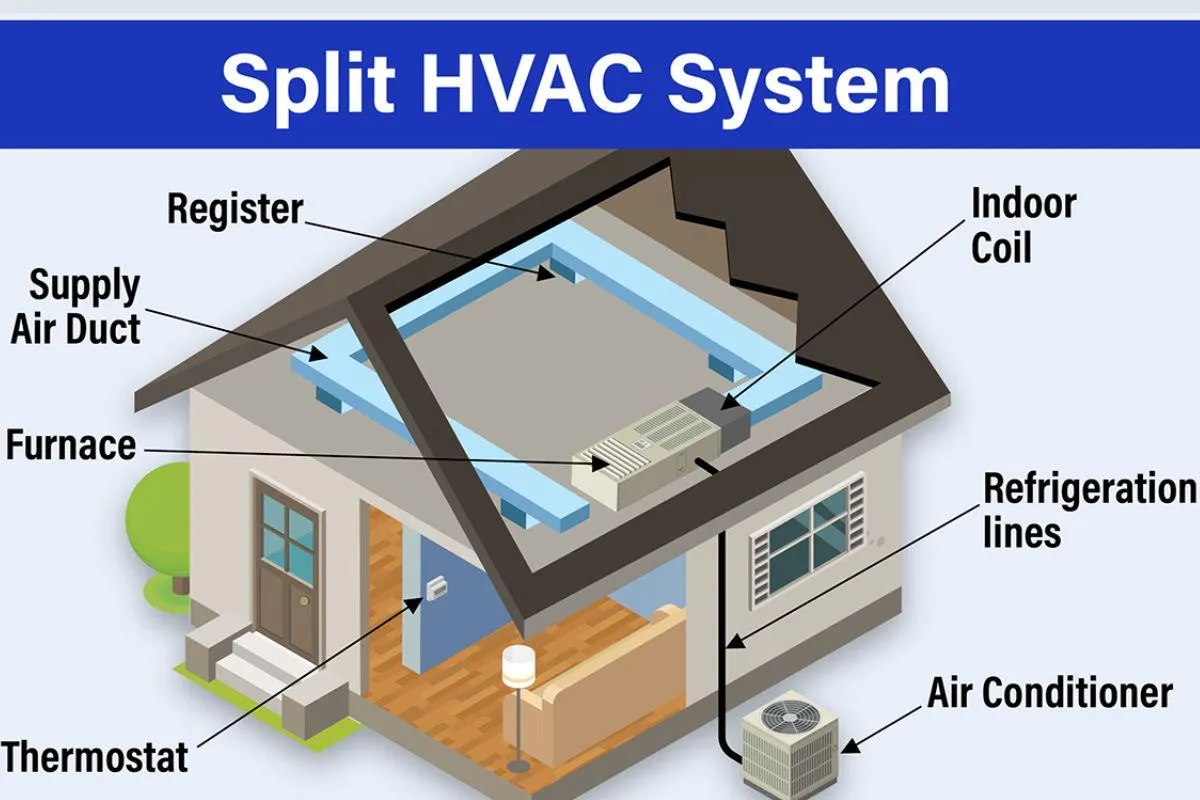
Central Air Conditioning (Split System)
This is the most common type of system, and it’s probably what you picture when you think of air conditioning. A split system has two main parts: an outdoor condenser unit and an indoor air handler (usually connected to a furnace or heat pump).
Best for: Larger homes with existing ductwork.
How it works: The system uses a series of ducts to push cool air throughout your home, while the outdoor unit releases the heat it extracts from inside.
Lifespan: 15 to 20 years, depending on maintenance and local conditions.
Pros: Efficient cooling for larger spaces, whole-house comfort, and better air filtration.
Cons: Higher upfront costs, ductwork maintenance, and a larger footprint.
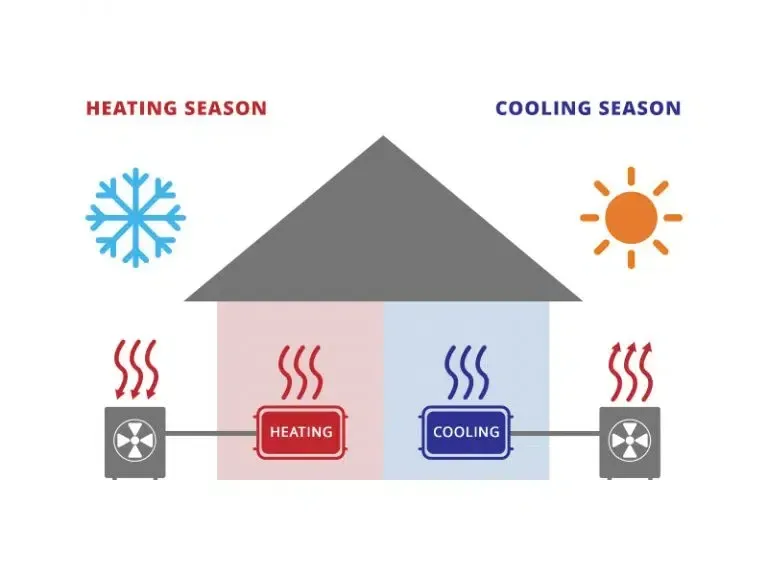
Heat Pumps – Cool and Efficient
A heat pump is like the multitool of HVAC systems. It cools your home in the summer by pulling heat out of your indoor air, and in the winter, it can reverse the process to provide heat (which is perfect for Arizona’s mild winters).
Best for: Homes in areas with mild winters and existing ductwork.
How it works: Instead of creating heat, it transfers it, making it incredibly efficient in temperate climates.
Lifespan: 10 to 15 years, though some high-quality units can last up to 20 years.
Pros: Energy efficient, provides both heating and cooling, and lower operating costs.
Cons: Less effective in extreme cold, but hey, this is Arizona – no worries there.
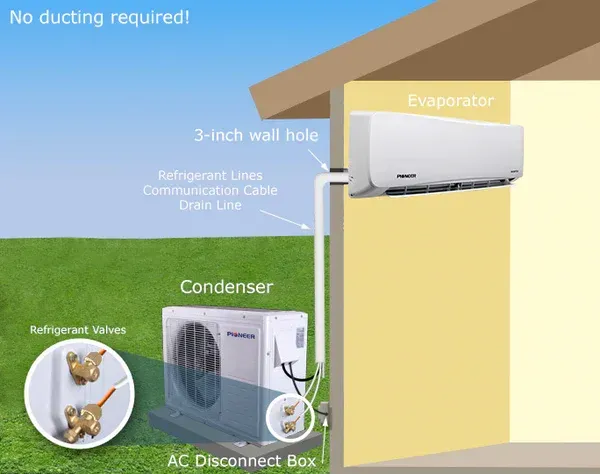
Ductless Mini-Split Systems – The Flexible Option
These are great if you have a smaller home, an addition, or a space without existing ductwork. Ductless systems consist of an outdoor compressor and one or more indoor air-handling units that can be mounted on walls or ceilings.
Best for: Condos, older homes without ductwork, or separate spaces like garages or casitas.
How it works: Like a central air system but without the ducts, these units blow cool air directly into each room.
Lifespan: 15 to 20 years, with proper maintenance.
Pros: Energy efficient, easy installation, and allows for zoned cooling.
Cons: Higher upfront costs per unit, and you’ll see them on your walls (though newer models are pretty sleek).
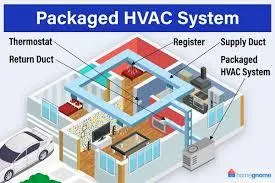
Packaged HVAC Systems – All-in-One Cooling (Often Installed on the Roof)
These systems bundle everything – the condenser, air handler, and sometimes even a heat pump – into one neat package, typically installed on the roof or a concrete slab outside. They’re common in commercial buildings and some Arizona homes with flat roofs.
Best for: Smaller homes, commercial spaces, or older homes with limited indoor space for a furnace or air handler.
How it works: Like a split system, but with all the components housed together, pushing air through a single set of ducts.
Lifespan: 10 to 15 years, depending on exposure to the elements and maintenance.
Pros: Compact, easier to install, and frees up indoor space.
Cons: Can be noisier, less efficient than split systems, and more exposed to the elements.
Rooftop Installation Costs:
Crane Rental: In Arizona, crane rentals for rooftop installations can range from $500 to $2,000, depending on the complexity and height of the building.
Additional Labor: Rooftop installations often require more labor and safety precautions, which can add another $500 to $1,000 to your installation cost.
Permits and Structural Support: If your roof needs additional support for the weight of the unit, that can add several hundred dollars more.
Total Estimated Installation Cost:
For a packaged rooftop system, expect to pay anywhere from $7,000 to $15,000, including the unit, crane rental, permits, and labor.
Final Thoughts:
Stay Cool, Arizona!
Choosing the right HVAC system for your Arizona home can feel like a big decision, but getting it right will keep you cool and comfortable for years to come. If you need a recommendation for a reliable HVAC contractor or just want to talk through your options, feel free to reach out.
Stay cool, Arizona – and remember, it’s a dry heat!
Stay in the know: SUBSCRIBE TODAY!
Nicole Porter, AZ Realtor
Address
Scottsdale, AZ
Phone
(623)-229-6086
Open Hours
9:00 am - 5:00 pm

